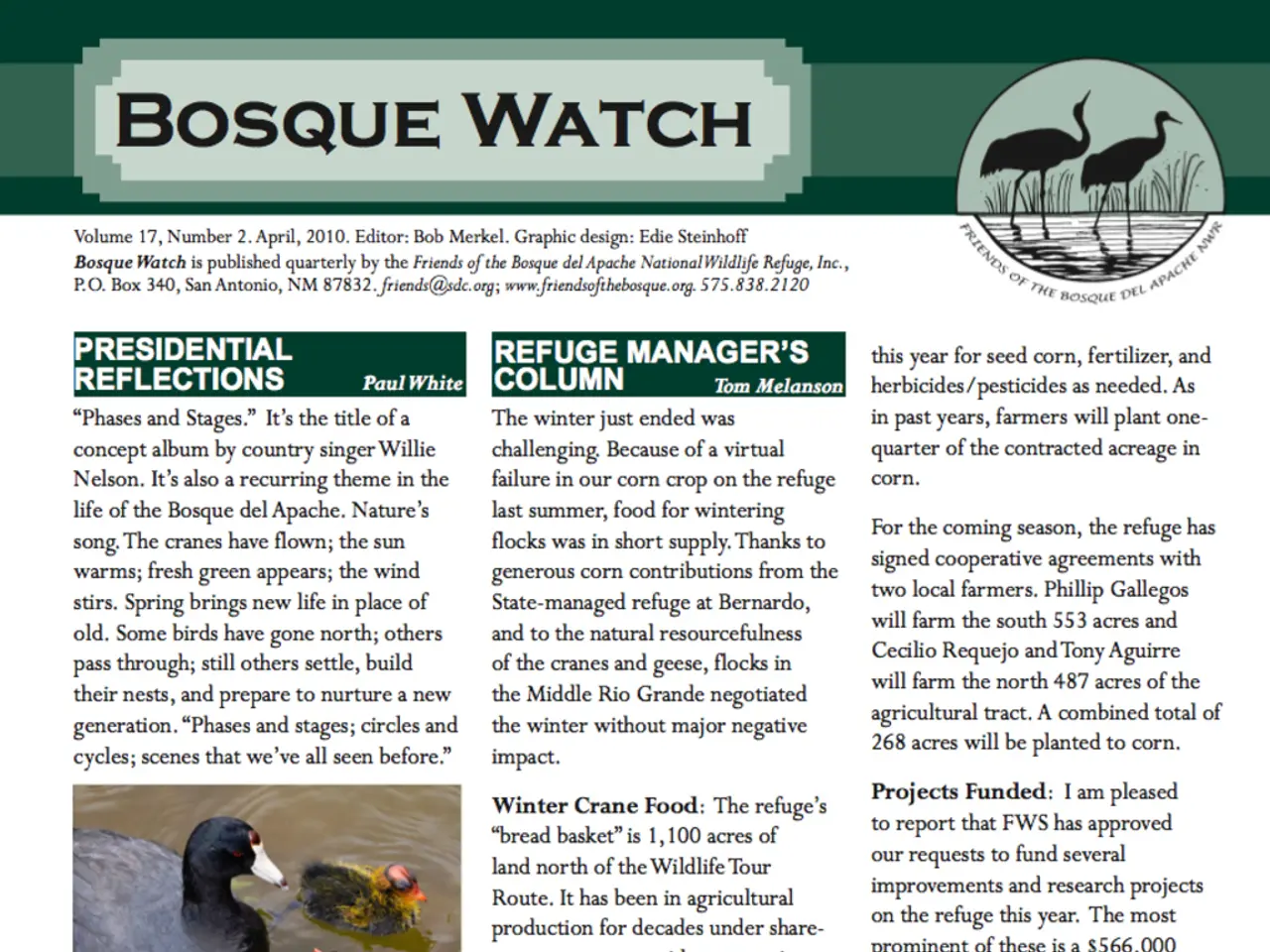Mortality Among Swans and Ducks in Ilvesheim: Reported Cases
In the picturesque town of Ilvesheim, a tragic event has unfolded in the local retention basin, claiming the lives of several ducks and swans. The primary culprit appears to be a harmful bloom of blue-green algae (cyanobacteria), which can produce toxins harmful to birds, fish, and other wildlife under warm and stagnant conditions.
Residents have expressed frustration with the municipality's response to the crisis, claiming that authorities were slow to inform the public about the danger in the water, lacked timely warnings and preventive measures, and that cleanup and mitigation efforts were inadequate or delayed. Communication about the cause and the risks to residents was also insufficient, leaving many uninformed or confused.
The tragedy began in mid-July when six birds, including a parent swan, two cygnets, and five ducks, were found dead within four days. A rescue operation involving the volunteer fire brigade, professional animal rescue, police, and municipal administration saved a parent swan, four cygnets, and three ducks, all of which show neurological symptoms. Unfortunately, one of the rescued cygnets did not survive.
Mayor Walther has expressed hope that the young swans will grow up and fly away from the retention basin on their own. As a potential preventive measure, he has suggested the use of decoys of swans in the water. However, the municipality initially planned to relocate the swans, but decided against it due to potential stress for the young animals.
The retention basin is surrounded by a high fence, preventing animals from escaping. Residents who have been observing the situation for months and documenting it on social media are shocked and accuse the municipality and the lower nature conservation authority of not reacting in time.
A biologist from Ilvesheim and residents warned the municipality about the risk to wild birds in the retention basin due to the falling water level and potential germs as early as May. The first dead swan was found in the basin in July, and the municipality provided food and fresh water.
Mayor Walther advocates for objectivity in the debate and states that the situation has shown that the retention basin is not a permanent habitat for wildlife. The cause of the basin's harmful conditions is currently under investigation, and the municipal administration plans to take water samples and have the affected animals autopsied.
The rescued birds are currently being cared for at a wildlife rescue station, receiving infrared light and electrolytes. Mayor Walther also states that the municipality will work together with relevant authorities to consider how to prevent future settlement of wildlife at the Ilvesheim infiltration basin in the future.
- The incident in Ilvesheim's retention basin, affecting various wildlife species, has raised concerns about the intersection of science and health-and-wellness, as the blue-green algae bloom highlighted the impact of environmental science on mental health, given the distress it caused residents.
- As the tragedy unfolded, the need for improved communication and coordination among health-and-wellness, mental-health, and environmental-science sectors became evident, with residents expressing the need for timely warnings and preventive measures to ensure the safety of both wildlife and the community.




